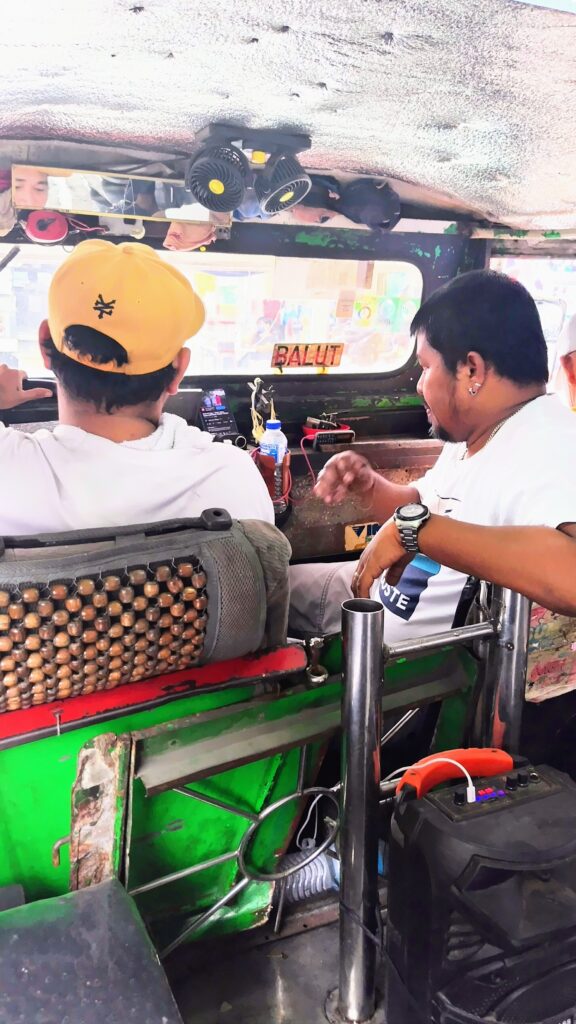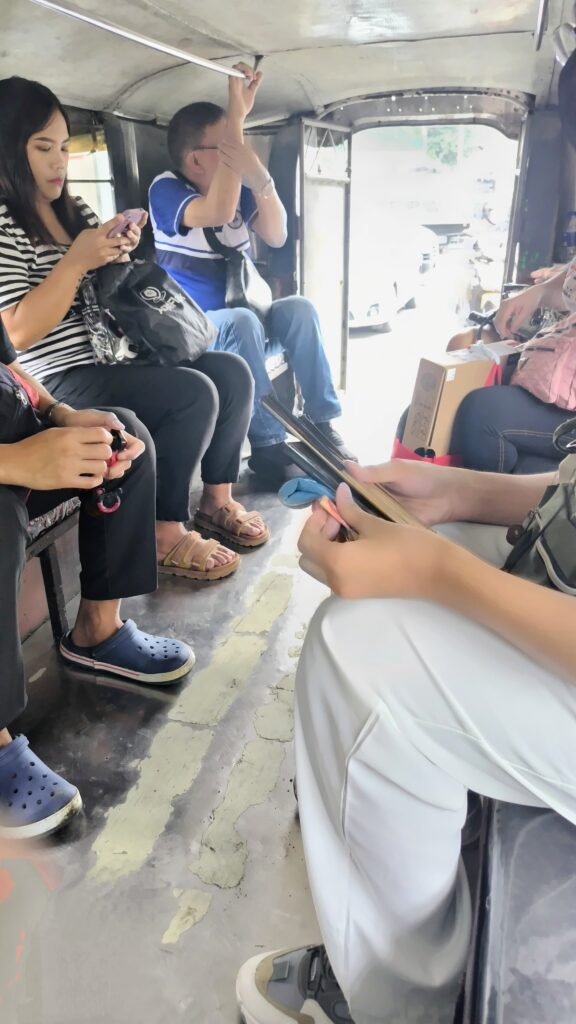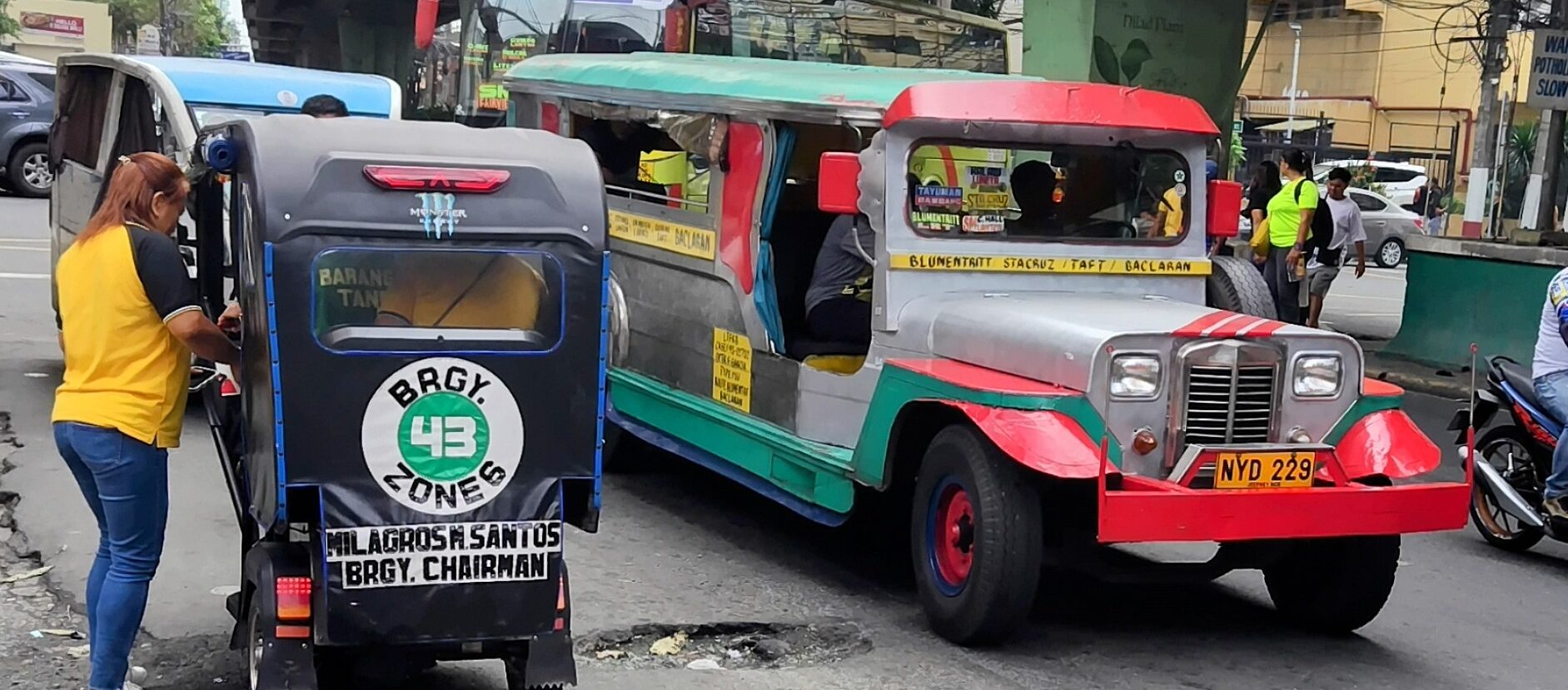When traveling abroad, local transportation can be a challenge. While taking a taxi is the easiest option (as long as you avoid unlicensed ones), it can be expensive over time, and frankly, it’s not as interesting as experiencing the local atmosphere. If you can master local transportation used by residents, your trip will become much more enjoyable, and you’ll have more interactions with locals.
However, for short-term travelers, riding local transportation can be quite a hurdle. While it might be easy in countries or cities with well-developed train, subway, or bus systems, the Philippines falls into the category of places with significant challenges.
In this article, based on my personal experience riding jeepneys during my trip to the Philippines in October 2023, I will explain how even short-term travelers can use the Philippines’ local shared bus, the “Jeepney.”
The Jeepney: The Philippines’ Iconic Local Shared Bus
What is a Jeepney?
Jeepneys are shared buses in the Philippines, characterized by their colorful appearance and relaxed atmosphere. They originated from modified US military Jeeps left behind after World War II. Over time, Filipinos creatively transformed them into their current colorful and distinctive form.
Features:
- Appearance: Characterized by flashy paint and decorations, they look like moving works of art. The designs vary by route, offering new discoveries with every ride.
- Structure: The vehicle body is open, with long benches inside. The ceiling is low, so be careful when getting on and off.
- Fare: Quite cheap, a short ride can cost just a few pesos. It’s generally a flat rate.
- Routes: They operate on fixed routes, but you can flag them down and get off anywhere.
Why is it popular?
- Affordability: It’s a common public transport in the Philippines and is very inexpensive compared to other modes of transport.
- Convenience: You can get on and off anywhere, making it a convenient way to get around, even for tourists.
- Local Experience: Riding a jeepney offers a valuable opportunity to experience local life firsthand.
- Unique Design: Their colorful and distinctive designs are excellent for photos.
Preparation
Use Google Maps to search for your destination and select “bus” as the mode of transport. The map will display bus stops and the bus routes to your destination. Bus stops might not always be clearly marked. Sometimes, vehicles stop in the traffic lane for passengers to get on and off.
The destination and major stops are written on the body of the jeepney. However, the text is often small and difficult to read unless the vehicle is stopped, especially if you’re not used to it. Ask a local waiting at the same spot or a street vendor if you’re in the right place.

How to Ride a Jeepney
- Flagging Down: When a jeepney approaches, raise your hand to stop it. Confirm your destination (or a landmark) with the driver to make sure it’s the right vehicle. You’ll always board and alight from the rear of the vehicle.
- Boarding: Inside, there are two facing long benches. Take any empty seat.
- Paying the Fare: Pay the fare to the driver or the conductor, if there is one. The fare is usually a flat rate and might be written above the driver’s seat. If you’re unsure, hand over a slightly larger amount and receive change.
- Getting Off: When you want to get off, shout “Para” or “Parapa” (meaning “stop”) to the driver. Alight quickly once the vehicle stops. Don’t be shy; shout loudly enough for the driver to hear you.

The Famous Fare Relay
Fares are generally paid directly to the driver or assistant. They will accept the money even while driving, without looking away. But what if your seat is far from the driver? This is where the jeepney’s famous “fare relay” comes in.
When a passenger in the back extends their hand with money, the passengers in between will pass the money along, like a bucket brigade, all the way to the driver. And if there’s change, it will be passed back in the reverse direction. It might feel unsettling the first time, but it’s a common courtesy, so don’t worry. If you get the chance, try participating in the relay yourself!
Important Notes When Riding a Jeepney
- Beware of Pickpockets: In crowded areas, there’s a risk of pickpocketing, so keep your valuables secure.
- Ride Comfort: The ride can be bumpy in heavy traffic, so those prone to motion sickness should be careful.
- Negotiation: Fares can sometimes vary by distance, so it’s good to confirm beforehand.
- Manners: Be considerate of other passengers and follow proper etiquette while riding.
Benefits of Riding a Jeepney
- Experience Local Life: Riding a jeepney is a valuable opportunity to observe the lives of Filipinos up close.
- Flat Fare: No need to negotiate fares.
- Access to Tourist Spots: Many major tourist destinations are accessible by jeepney.
- Interact with Locals: It increases opportunities to converse with locals, enriching your travel memories.
Conclusion
The jeepney is an iconic mode of transport in the Philippines, charming with its colorful appearance and relaxed atmosphere. While it might require a little courage, riding a jeepney will offer you an authentic experience of local life in the Philippines.



